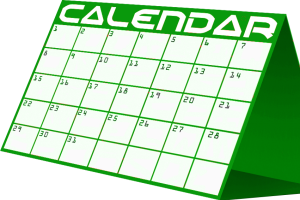Readers' Forum
Replies to Queries — 2
Va-va voom
Readers' Forum
Replies to Queries — 2
Va-va voom
My client imports off-road racing motorcycles from Holland. They are not licensed for on-road use. Customs tell him that the method he uses to calculate his VAT liability — which is basically that he only pays VAT on his margin — is incorrect and I believe that they are right. The client maintains that his competitors, all of a similar size to his business, are using a scheme (which is especially for such off-road bikes) that has a similar effect to his. He maintains that they could not be selling their motorbikes at the price they are if they were accounting for VAT on their selling price.
Customs maintain that the client should account for VAT in full on the selling price and has no VAT to claim back because it is effectively at zero rate using acquisitions for goods received from the European Community.
Do readers know a scheme that allows a different method of accounting for VAT on the importation of off-road motorcycles, or can they confirm exactly how the client should account for VAT?
(Query T16,449) — Biker.
It is apparent that 'Biker's client is applying the second-hand goods scheme to his sales of the off-road racing motorcycles, which Customs have quite correctly and unsurprisingly queried.
Motorcycles can qualify for the second-hand goods scheme in the same way as motor cars. However, where there are acquisitions from other European Community member states special rules apply.
First, where the motorcycles are acquired from a business registered for VAT in another European Community member state and a VAT invoice is issued. In this case it is normal procedure for the client to provide their United Kingdom VAT registration number to the Dutch supplier. This will enable the Dutch supplier to zero-rate the supply to the client. The client will have to account for VAT on the acquisition via the normal quarterly return. VAT is calculated at 17.5 per cent and included in Box 2 (output tax) and recovered using the normal rules in Box 4 (input tax). In this situation the goods cannot be sold under the margin scheme and output tax must be charged on the full selling price of the goods.
Secondly, where the motorcycles are acquired from a business registered for VAT in another European Community member state under the margin scheme. Here the goods will have been subject to VAT in Holland and the sale of the goods to the United Kingdom will not be treated as an acquisition for VAT purposes. Provided confirmation is obtained that the goods have been sold to the client under the margin scheme, the goods may be sold on by the client using the margin scheme.
It seems that the client may be applying the margin scheme incorrectly to the sale of goods not eligible to be sold under the scheme. It may be that the clients' competitors' circumstances are quite different, and the motorcycles they sell may qualify for the margin scheme. After all, we have all come across clients who claim to have 'mates down the pub' who don't pay any tax at all!









